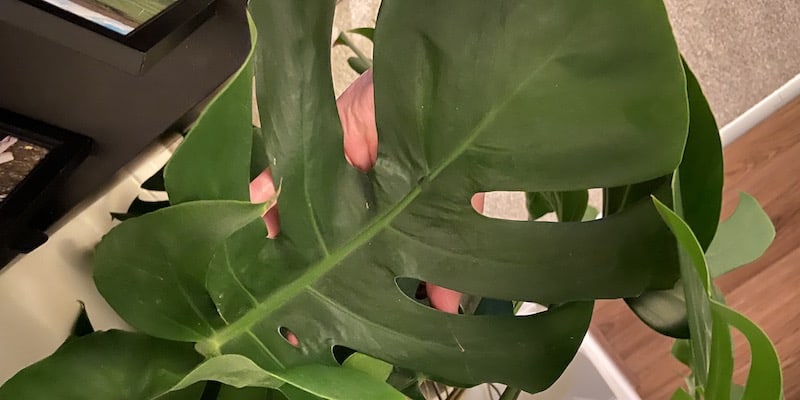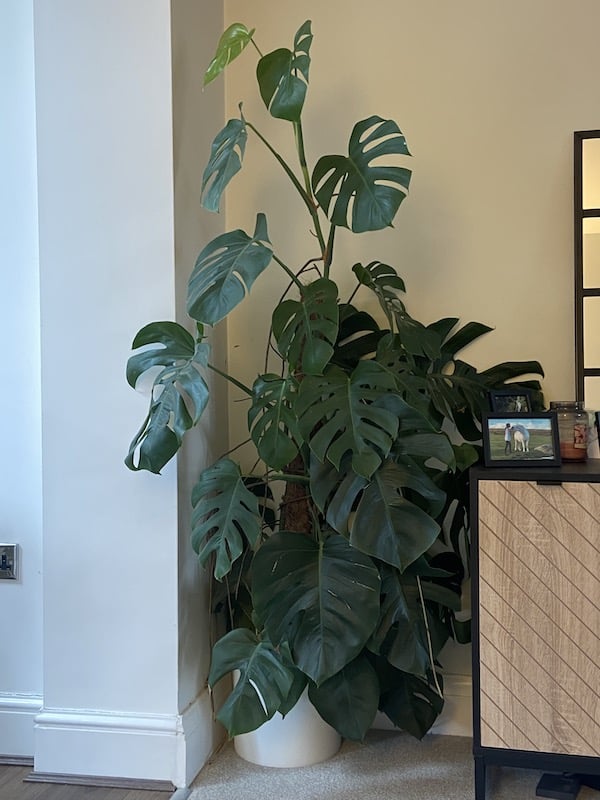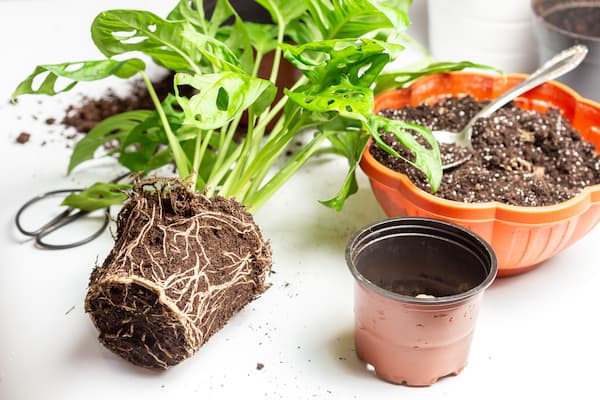
Why are my Swiss cheese plant leaves curling?
Our site is reader supported, this means we may earn a small commission from Amazon and other affiliates when you buy through links on our site.
If the leaves on your Swiss cheese plant are curling, the main cause could be that you have either overwatered or underwatered your plant. More often than not, most of the issues you will experience with Monstera plants, from yellowing leaves to drooping leaves always comes back to a watering issue. However, problems with watering are not the sole cause of curling leaves and it could also be down to the fact the plant is under heat stress or an attack from common pests, for example, scale insects.
Read on further to find out which cause could be the one at the root of your plants’ problem, and what you can do about it.
Problems with watering that often lead to the curling of leaves
Both overwatering and underwatering your Swiss cheese plant will result in the same problem. Unfortunately, in these circumstances the leaves don’t get enough water or nutrients, resulting in the leaves curling up to preserve the water they do have. This is because curling up reduces the leaves’ surface area through which the water is lost.
You should be able to tell whether you have been overwatering or underwatering your swiss cheese plant by simply feeling the leaves. If they still feel quite full then it is highly likely you are overwatering your plant, whereas if they feel crisp and dry then you are, more than likely, underwatering.
What can you do?
The watering schedule for your swiss cheese plant should be on what the plant needs, rather than what day of the week it is. You only need to water your plant when the soil is dry 3cm down. If you want more detailed information on watering your swiss cheese plant you can read through the information on watering in our how to care for a Swiss cheese plant article.
We highly recommend checking out our informative article on the Swiss cheese plant pests and diseases and reading through the information about root rot, because this fungal disease is often a consequence of overwatering your plant.
Heat stress
Aside from problems with watering, plant leaves that are curling can also indicate that the plant is in an environment where the temperature is simply too high. I actually noticed this with my own swiss cheese plant (pictured above) when I had my log burner installed, The spot in the living room where it was placed became simply too warm for the plant, whereas, beforehand, it had previously been just fine. I moved it to a new position, in the same room, just not as close to the fire and it perked up nicely, and it has been thriving ever since.
In addition to suffering from heat stress, if you notice that the leaves on your plant are turning yellow and/or black then the plant is receiving too much direct sunlight. In these circumstances, it would be highly advisable to move your plant to a more shaded spot in your home.
What can you do?
Check the temperature in the spot in which your swiss cheese plant is sitting, the recommended temperature for your plant should sit somewhere between 15˚C to 29˚C. If you think that the temperature seems to be okay, look out for any signs of sudden hot blasts of air through the room in which the plant is located, for example, from a heater on a timer perhaps, or in my case a log burner.
If the leaves have curled up gradually and not overnight, it may be because the humidity is too low. It needs to be 50+%, and you can try installing a humidifier in the room to see if you find an improvement in the health of your plant. Other alternative methods you could use (if a humidifier is not an option) are at least a dish of water near the plant or a humidity tray. If this doesn’t solve the problem, it may be that you need to move the plant to a different location, such as a sunny bathroom. Believe it or not, this is a room where they often thrive.
Pests and diseases
Some common pests and diseases will have the same curling leaf effect on your Swiss cheese plant. If you notice the leaves curling and have ruled out watering or heat, the most likely cause will be scale insects because these pests suck the sap from the leaves.
What can you do?
We have written a separate and more detailed article about the pests and diseases that will affect your swiss cheese plant. You will find out which pests are more likely to cause leaf curling and then go on a hunt for them on your plant. If you find any, treat them as indicated in the article.
Root bound
Is your plant root bound? This is where the root ball of your plant becomes too large for the pot. The roots are all squashed in together and can’t expand enough to carry the full amount of water and nutrients to the rest of the plant. The leaves then curl up to preserve water.
What can you do?
Scrape some soil away to take a look at the swiss cheese plant’s roots. If the roots are growing in a circle around the edge of the plant, it’s time to transplant the plant to a new pot. Read the instructions on how to do this in our how to re-pot a Swiss cheese plant guide before you start.

